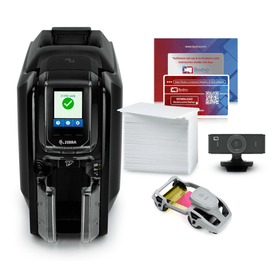Proximity cards or prox cards are contactless ID options that get “read” by entry card readers to allow or deny secure physical access. Each of these cards or keyfobs contains an integrated circuit with specific programming and antenna, which boosts the range at which it is possible to read the card. Prox cards lack power sources, which means you have no batteries that need replacing.
A prox card uses radio frequency signals to authenticate the authority of the person holding them, using the embedded antenna to exchange its encoded data when brought close to a card reader. The data here is just pre-programmed binary numbers used for identification. HID prox cards are the gold standard, but there are plenty of options to customize, making the ordering process a bit complicated for newbies. Even if you had Magicard Enduro3E, or one of the other newer IDP printers, which can print proximity RFID cards, you would still need to pay attention to the following things.
The HID Prox Format
You need the right credential format in your RFID card, as relates to the HID system meant to scan it. HID sets a format code for each prox card, and based on this, the internal programming of the card is read. Check the box your old RFID cards came in, and you should find this code on an end label. It is important to use the right code; otherwise, your card would be practically useless.
The Programming Information
You need to be clear on the programming specifications. An HID prox card would have a base part number, as well as a bunch of letters signifying how the credentials appear. The combination of these things can vary, giving you many options; however, the main categories would be the same in every case. Programming and frequency types that you can pick from include L (Programmed, Low Frequency), C (Programmed, Low Frequency – Casi Rusco Format), and N (Non-Programmed, Low Frequency). Only bigger organizations using HID programming should go in for non-programmed cards.
Facility Code
This is a component of the internal programming common to all RFID cards. Your organization possibly has a specific protocol in place for this, such as based on location, for instance. Most systems these days accept multiple facility codes, which mean there is no sure requirement that your new cards’ facility codes match those of your older ones.
















